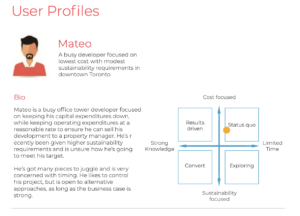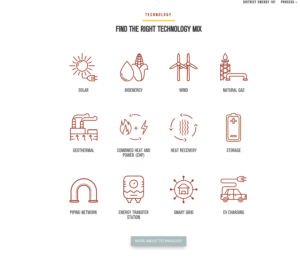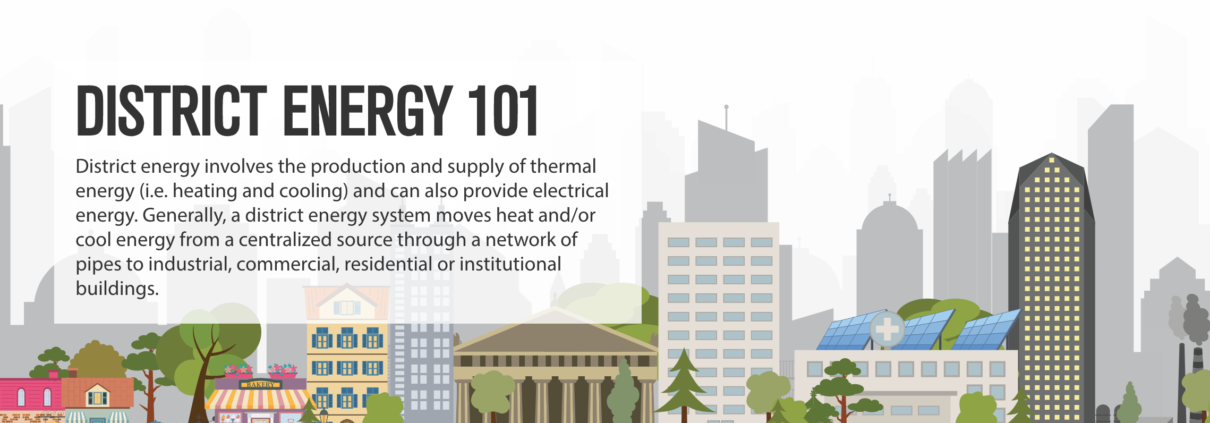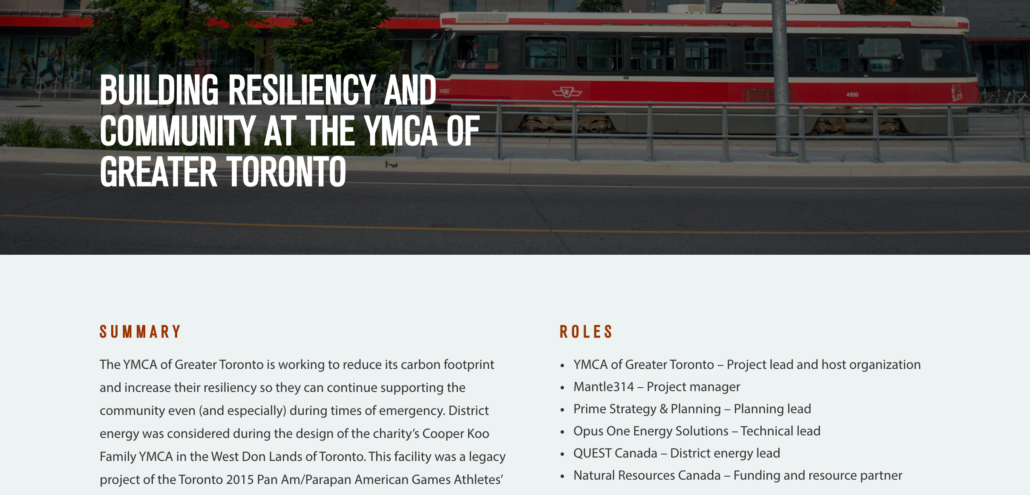Mantle314 secured a grant from Natural Resources Canada to, in part, develop a knowledge-sharing website about resilient, low-carbon district energy. As the lead project manager and user-experience designer, I was brought in to take the idea from concept to reality.
Despite being a key policy tool to reduce greenhouse gasses in the heating and cooling of buildings, district energy is an underused policy tool. In Canada, there is no main location to share resources, tips, success stories, or promote the solution to developers, politicians, policy analysts, and the general public.
As the leading community energy advocacy organization in Canada, QUEST Canada agreed to host the site to help promote district energy. Embedding the district energy web content on QUEST’s website ensured a broader collection of key decision-makers will be able to access the information, and the information will be kept up-to-date and sustained over many years.
Research suggests targeting developers

As part of the discovery process, I interviewed over a dozen district energy stakeholders, including planners, municipal officials, engineers, strategists, federal scientists, district energy corporate leaders, developers, and advocates. I researched primary and secondary documents, as well as completed a detailed competitive analysis to both understand the district energy space and digital best practices.
District energy is a collective project
District energy is the production and supply of thermal (hot and cold) energy from a centralized plant. Resilient systems can help during power outages, like extreme weather, by providing centres of support, with heat and power, for affected communities. It’s also an efficient way to use less carbon-intensive fuel sources, such as solar thermal, heat recovery from sewers, or deep lake water cooling.
District energy requires an entire neighbourhood to switch from independent systems to de-risk and make the system financially viable. As a result of the feedback we received about the importance of the developer community to the successful development of community-based energy systems, the structure of the website was designed to provide content for a) the developer community and b) municipalities and decision-makers. The best-designed systems need customers and the developer community is key to ensuring projects are successful.
Insights revealed that developers did not understand the technology, the benefits, or how to get to success.
Making is simple
A key insight we heard was that developers avoid district energy systems because they are unaware of the technology and the benefits. On the homepage, we targeted developers with a key marketing message and linked to an easy infographic explanation of the benefits on the District E nergy 101 page.
nergy 101 page.
The District Energy 101 page is an infographic executive summary of the site, breaking down the basics of the technology, and explaining why climate change risks improve the business case for building district energy systems. It also lays out the benefits and explains how to get systems built. This page is an easy entryway to help explain the policy solution.
Demystifying the t echnology
echnology
Another barrier for developers is that they don’t understand the technology underpinning resilient and low-carbon district energy systems. In order to demystify district energy technology, we provided key information about resilient low-carbon energy sources and the various component technology required to operationalize district energy systems. We designed each product page to be like a new smartphone product page to keep it simple while offering key benefits and considerations.
Demonstrating success
QUEST Canada was very happy with its turn-key solution to boost awareness and uptake in district energy systems. The funder of the website, NRCan, also added their support for the modern, yet simple design. Our district energy expert advisory committee was very pleased to have a new tool in their toolbelt when making the case for district energy to government officials, politicians, and developers.






